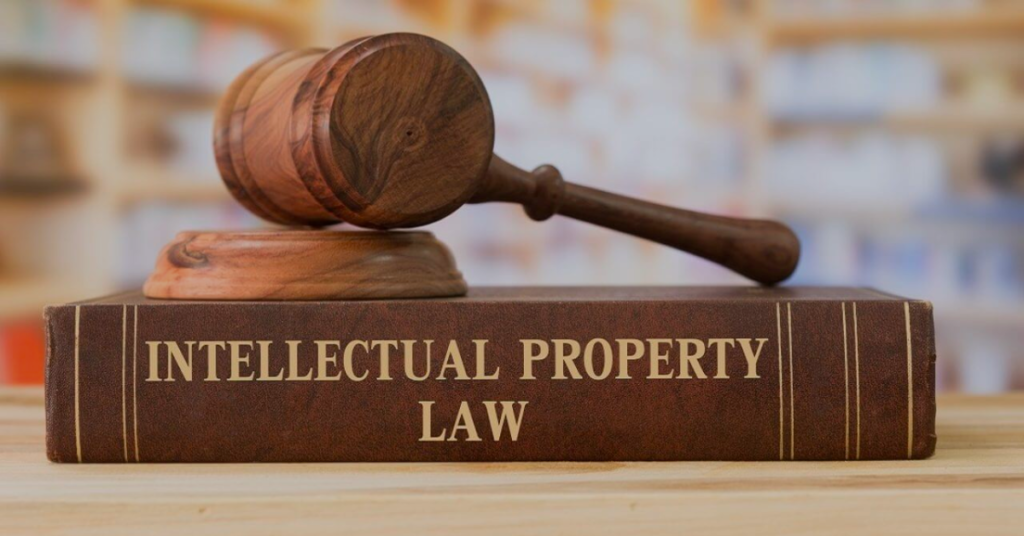Stay of Suit Under the Civil Procedure Code, 1908: A Comprehensive Guide
The principle of res sub judice, enshrined in Section 10 of the Civil Procedure Code (CPC), 1908, aims to prevent courts of concurrent jurisdiction from simultaneously trying two parallel suits regarding the same matter. This legal provision, known as 'Stay of Suit', promotes judicial economy, avoids conflicting judgments, and prevents harassment to parties. This article provides a detailed analysis of Section 10, explaining its scope, conditions, exceptions, and its practical implications within the Indian legal system.
What is Stay of Suit (Res Sub Judice)?
Stay of suit, or res sub judice (Latin for "a matter under judgment"), is a legal doctrine that suspends the trial of a subsequently instituted suit when the matter in issue is already directly and substantially in issue in a previously instituted suit between the same parties (or their representatives) and pending in the same or any other court in India having jurisdiction to grant the relief claimed, or in any court beyond the limits of India established or continued by the Central Government and having like jurisdiction, or before the Supreme Court. The essence of this provision is to prevent a situation where multiple courts are simultaneously adjudicating the same dispute.
Section 10 of the Civil Procedure Code (CPC), 1908: The Statutory Basis
Section 10 of the CPC explicitly lays down the principle of stay of suit:
- **Section 10. Stay of suit.**—No Court shall proceed with the trial of any suit in which the matter in issue is also directly and substantially in issue in a previously instituted suit between the same parties, or between parties under whom they or any of them claim litigating under the same title where such suit is pending in the same or any other Court in India having jurisdiction to grant the relief claimed, or in any Court beyond the limits of India established or continued by the Central Government and having like jurisdiction, or before the Supreme Court.
Explanation.—The pendency of a suit in a foreign Court does not preclude the Courts in India from trying a suit founded on the same cause of action.
This section mandates a stay on the trial, not the institution, of the subsequent suit. The subsequently instituted suit remains on the court's record but its trial is put on hold pending the outcome of the earlier suit.
Key Conditions for the Application of Section 10
For Section 10 to apply and a stay of suit to be granted, the following conditions must be met:
-
Two Suits: There must be two suits – a previously instituted suit and a subsequently instituted suit.
-
Matter in Issue Directly and Substantially the Same: The matter in issue in the subsequent suit must be directly and substantially the same as the matter in issue in the previously instituted suit. This is the most crucial condition. The issues need not be identical in wording, but the underlying subject matter of the dispute must be the same.
-
Same Parties or Their Representatives: Both suits must be between the same parties, or between parties under whom they or any of them claim, litigating under the same title. The term "same parties" includes those who are representing the actual parties in a representative capacity. The 'title' refers to the legal character or right in which the parties are litigating.
-
Competent Court: The previously instituted suit must be pending in:
- The same court where the subsequent suit is filed.
- Any other court in India having jurisdiction to grant the relief claimed in the subsequent suit.
- Any court beyond the limits of India established or continued by the Central Government and having like jurisdiction.
- The Supreme Court.
-
Jurisdiction to Grant Relief: The court where the previously instituted suit is pending must have jurisdiction to grant the relief claimed in the subsequent suit. This emphasizes that the prior court should possess the competence to fully resolve the dispute presented in the later suit.
If any of these conditions are not satisfied, Section 10 will not apply, and the subsequent suit will not be stayed.
Meaning of "Directly and Substantially in Issue"
The expression "directly and substantially in issue" is pivotal to the application of Section 10. A matter is "directly" in issue when it is the main question or subject of the dispute. It is "substantially" in issue when the decision of the suit depends on the determination of that matter.
A matter may be incidentally or collaterally in issue, but that is not sufficient for the application of Section 10. The test is whether the decision in the first suit would operate as res judicata (another related, but distinct, principle) in the subsequent suit. If the decision in the first suit would conclusively determine the issue in the second suit, then the matter is directly and substantially in issue in both suits.
The "Explanation" to Section 10: Foreign Court Exception
The Explanation to Section 10 clarifies that the pendency of a suit in a foreign court does not preclude the courts in India from trying a suit founded on the same cause of action. This means that even if a suit is already pending in a foreign court, an Indian court is not barred from hearing a suit based on the same cause of action. This reflects the principle that Indian courts should not be constrained by proceedings in foreign courts, particularly when the cause of action arises in India or the subject matter is located in India.
Object and Purpose of Section 10
The primary object of Section 10 is to prevent courts of concurrent jurisdiction from simultaneously trying two parallel suits in respect of the same matter. This is based on several important considerations:
-
To Avoid Conflicting Decisions: If two courts hear the same matter simultaneously, there is a risk of conflicting judgments, which would create confusion and uncertainty in the legal system.
-
To Prevent Multiplicity of Proceedings: Allowing parallel suits would lead to unnecessary duplication of efforts, wasting the time and resources of the courts and the parties involved.
-
To Avoid Harassment of Parties: Requiring parties to defend the same suit in multiple forums would be oppressive and could lead to unnecessary expenses and inconvenience.
-
To Ensure Judicial Economy: By staying the subsequent suit, the court ensures that the issue is resolved in one forum, promoting judicial efficiency and conserving judicial resources.
Stay of Suit vs. Res Judicata
While both Section 10 (Stay of Suit) and Section 11 (Res Judicata) of the CPC aim to prevent multiplicity of proceedings, they operate at different stages and under different conditions.
-
Stay of Suit (Section 10): Applies when a suit is pending in a court. It stays the trial of a subsequently instituted suit until the previously instituted suit is decided. The prior suit is ongoing.
-
Res Judicata (Section 11): Applies after a suit has been decided. It prevents the same parties from relitigating the same issues that have already been decided by a competent court in a previous suit. The prior suit has reached a final judgment.
In essence, Section 10 prevents a court from trying a subsequent suit, while Section 11 prevents a court from deciding a subsequent suit based on matters already adjudicated.
Procedure for Obtaining a Stay of Suit
A party seeking a stay of suit under Section 10 typically files an application before the court where the subsequent suit is pending. The application should clearly demonstrate that all the conditions of Section 10 are met. This involves providing evidence of the previously instituted suit, the identity of the parties, the similarity of the matters in issue, and the jurisdiction of the court where the prior suit is pending.
The court will then issue notice to the other party, giving them an opportunity to respond to the application. After hearing both parties, the court will determine whether the conditions of Section 10 are satisfied. If the court is satisfied, it will issue an order staying the trial of the subsequent suit until the previously instituted suit is decided.
Consequences of Disobeying a Stay Order
If a court proceeds with the trial of a suit despite a valid stay order under Section 10, the proceedings would be considered irregular and may be liable to be set aside on appeal or revision. The principle is that an order staying the suit must be obeyed; failure to do so can lead to the decision being rendered ineffective.
Exceptions and Limitations
While Section 10 is a mandatory provision, there are certain situations where it may not be applicable or its application may be limited:
-
Suit for Injunction: Courts have sometimes held that a stay of suit may not be appropriate where the subsequent suit is for an injunction restraining the proceedings in the prior suit. This is because granting a stay in such a case would effectively decide the issue of whether the prior suit should proceed, without giving the plaintiff in the subsequent suit a proper opportunity to be heard.
-
Frivolous or Vexatious Suits: Courts have the inherent power to dismiss frivolous or vexatious suits, even if the conditions of Section 10 are technically met. This power is exercised sparingly and only in cases where it is clear that the subsequent suit is an abuse of the process of the court.
-
Interim Orders: Section 10 only stays the trial of the suit. It does not prevent the court from passing interim orders, such as orders for attachment before judgment or appointment of a receiver, if the circumstances warrant it.
Practical Implications and Case Laws
The application of Section 10 is often complex and fact-dependent. Courts have interpreted the provision in various contexts, leading to a body of case law that provides guidance on its application. Some notable aspects include:
-
Burden of Proof: The burden of proving that the conditions of Section 10 are met lies on the party seeking the stay.
-
Interpretation of "Matter in Issue": Courts have emphasized that the "matter in issue" should be interpreted broadly, taking into account the substance of the dispute rather than merely the form of the pleadings.
-
Discretion of the Court: While Section 10 is mandatory in its terms, courts have some discretion in determining whether the conditions are actually met and whether a stay would be in the interests of justice.
Several landmark judgments have shaped the understanding and application of Section 10. For example, the Supreme Court has clarified the scope of "directly and substantially in issue" and the importance of preventing conflicting decisions.
Conclusion
Section 10 of the Civil Procedure Code, 1908, plays a vital role in preventing multiplicity of proceedings, avoiding conflicting judgments, and promoting judicial economy. By understanding the conditions for its application, the meaning of "directly and substantially in issue," and the relevant case law, legal professionals and litigants can effectively utilize this provision to ensure fairness and efficiency in the litigation process. While the provision is mandatory in nature, courts retain some discretion in its application, ensuring that the interests of justice are always paramount. The principle of stay of suit, therefore, remains a cornerstone of civil procedure in India, contributing to the integrity and efficiency of the judicial system.




